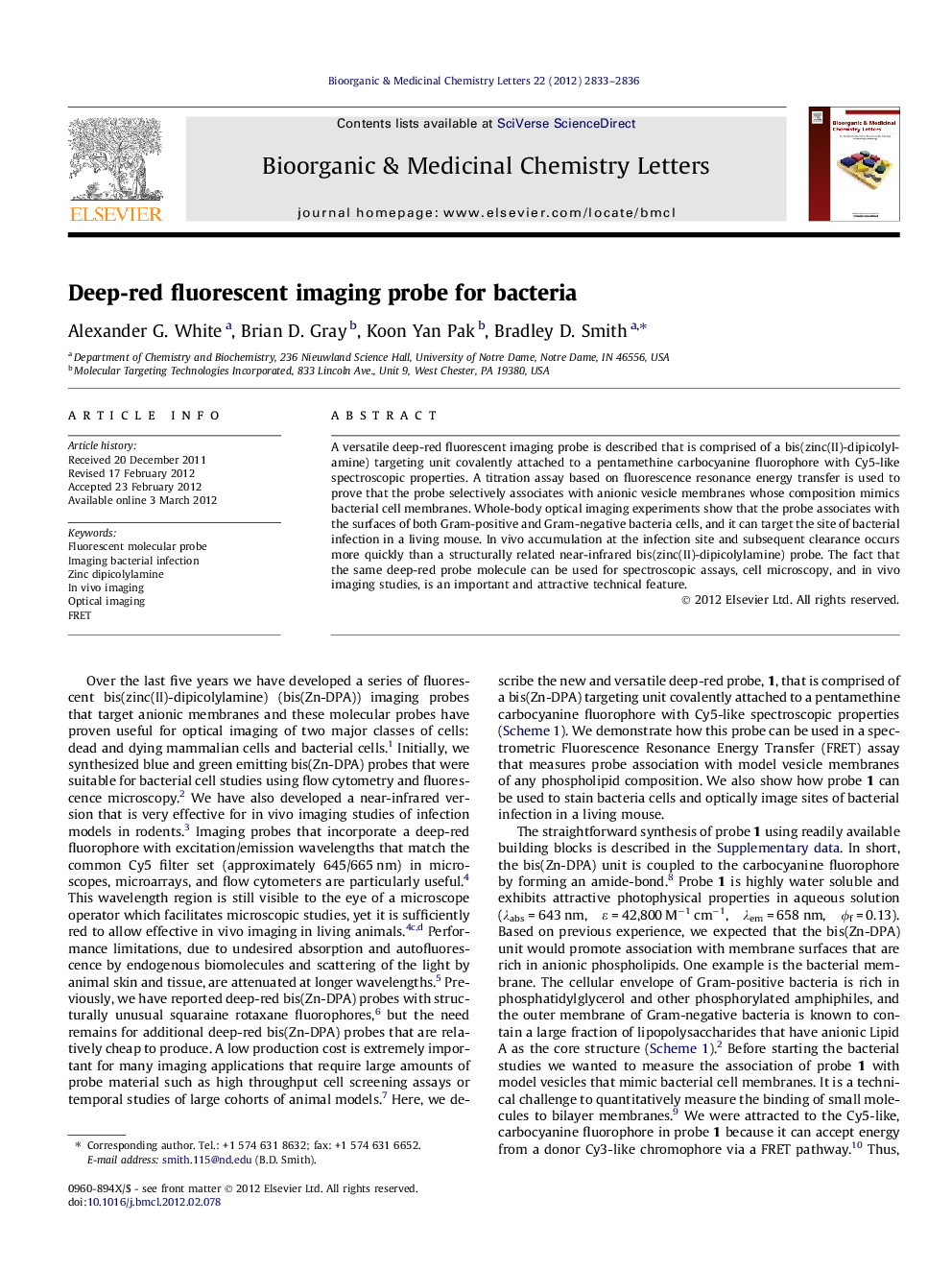| Article ID | Journal | Published Year | Pages | File Type |
|---|---|---|---|---|
| 1361285 | Bioorganic & Medicinal Chemistry Letters | 2012 | 4 Pages |
A versatile deep-red fluorescent imaging probe is described that is comprised of a bis(zinc(II)-dipicolylamine) targeting unit covalently attached to a pentamethine carbocyanine fluorophore with Cy5-like spectroscopic properties. A titration assay based on fluorescence resonance energy transfer is used to prove that the probe selectively associates with anionic vesicle membranes whose composition mimics bacterial cell membranes. Whole-body optical imaging experiments show that the probe associates with the surfaces of both Gram-positive and Gram-negative bacteria cells, and it can target the site of bacterial infection in a living mouse. In vivo accumulation at the infection site and subsequent clearance occurs more quickly than a structurally related near-infrared bis(zinc(II)-dipicolylamine) probe. The fact that the same deep-red probe molecule can be used for spectroscopic assays, cell microscopy, and in vivo imaging studies, is an important and attractive technical feature.
Graphical abstractFigure optionsDownload full-size imageDownload as PowerPoint slide
